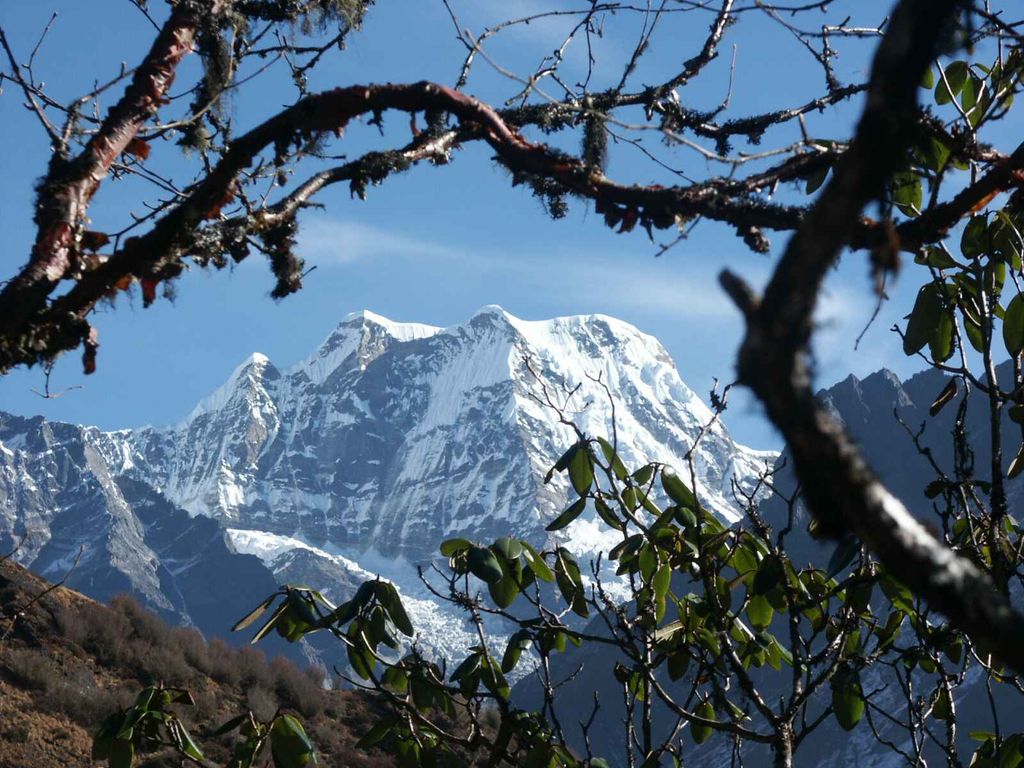Mera Peak

About
At an astounding 6,476 meters (21,247 ft), Mera Peak is Nepal's highest trekking peak and a well-liked climbing destination for those looking to reach the top of the Himalayas. Mera Peak, which is in the Solu-Khumbu region, provides an exhilarating but manageable ascent, stunning sweeping views of some of the tallest mountains in the world, and a once-in-a-lifetime experience through isolated communities and pristine landscapes.
Locate Us
Nearby Attractions
There are three primary peaks on the peak:
- Mera North (6,476m)
- The central Mera (6,461m)
- South Mera (6,065 meters)
Everest, Lhotse, Makalu, Cho Oyu, and Kanchenjunga are five of the world's 8,000-meter peaks that can be seen from the summit of Mera Peak. One of the main attractions of the Mera Peak trip is this expansive view.
Mera Peak is considered a non-technical climb compared to other Himalayan peaks, making it suitable for trekkers with basic mountaineering skills. However, it still requires physical fitness, acclimatization, and the use of climbing gear such as crampons, ice axes, and ropes.
There are two main routes to the summit:
The North Route (Standard Route) – This is the most popular and commonly used route. It starts from Lukla, passes through the remote Hinku Valley, and involves crossing the Mera La Pass (5,415 meters) before reaching the High Camp.
The South Route (Less Popular) – This route approaches the peak from the south via the Zatra La Pass. It is steeper and more challenging but offers a more direct path to the summit.
The climb from High Camp to the summit involves navigating through snowfields and crevasses. The final ascent to the summit is steep and requires the use of fixed ropes. Despite being a trekking peak, Mera Peak's altitude poses a significant challenge, making proper acclimatization essential.
The following times of year are ideal for climbing Mera Peak:
- April through May is spring. It's perfect for climbing because of the steady weather and comfortable temps.
- Autumn (September to November): This is another popular climbing season because of the clear skies and ideal conditions.
Because of the severe weather and higher hazards, the winter and monsoon seasons are less appropriate.
Climbers traverse some of the most isolated and culturally diverse regions of the Solu-Khumbu region on their way to Mera Peak. Trekkers travel through high-altitude pastures, verdant rhododendron forests, and traditional Sherpa communities.
Important cultural highlights consist of:
Lukla: The hike begins at Lukla, which is well-known for its daring airport.
Khare: The settlement of Khare is the starting point for acclimatization and last-minute preparations prior to the ascent.
Remote Villages: Trekkers get the opportunity to encounter the distinctive way of life, customs, and friendliness of the Sherpa people.
Mera Peak climbing presents a number of difficulties, such as the elevation, weather, and physical stamina. By pacing themselves, staying hydrated, and appropriately acclimatizing, climbers can prevent altitude sickness. For safety and direction, it is strongly advised to climb with a qualified guide or sign up for an organized trip. A successful climb requires the right equipment, attire, and planning. For those who want to experience a Himalayan climb without requiring a lot of technical knowledge, Mera Peak is a great option. It provides the ideal fusion of breathtaking natural beauty, cultural immersion, and adventure. It is a memorable experience because of the peak's relative accessibility and the opportunity to see expansive vistas of some of the tallest mountains in the world.
Mera Peak is a difficult but attainable objective for hikers who want to push themselves and reach a major climbing milestone. It can also be used as a springboard to more difficult Himalayan climbs. Climbers can enjoy the excitement of a high-altitude ascent while taking in the cultural diversity of the Solu-Khumbu region at Mera Peak, a beacon of adventure in Nepal's Himalayan scenery. Adventurers from all over the world are drawn to Mera Peak because of its rewarding summit, easily accessible routes, and stunning vistas. Mera Peak is a climb that offers lifelong memories, whether it is done as a stand-alone experience or as training for other peaks.